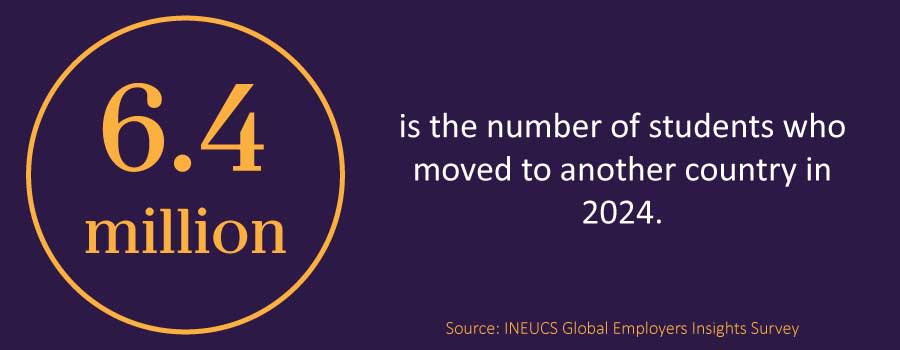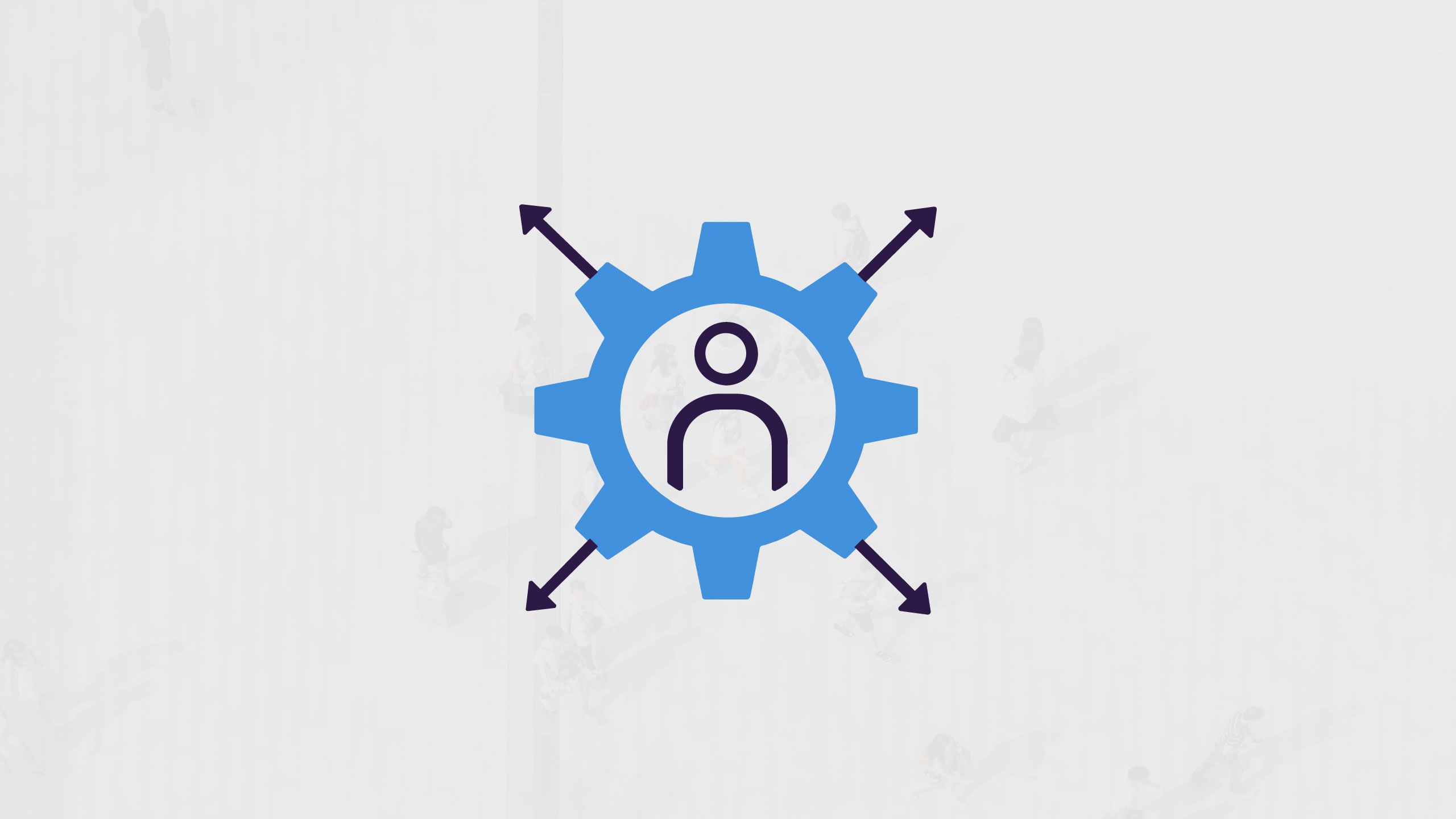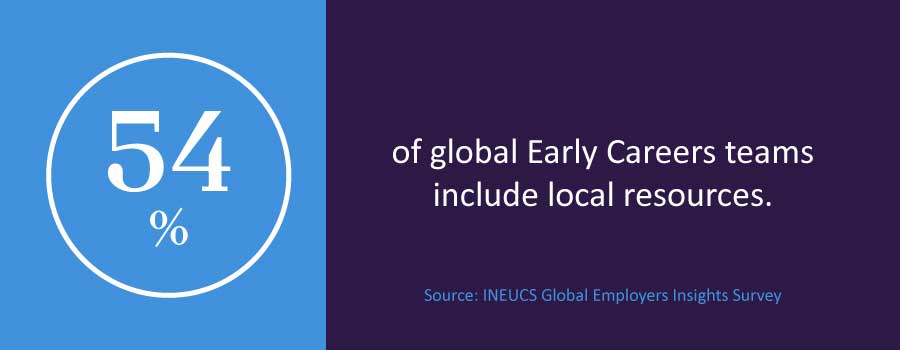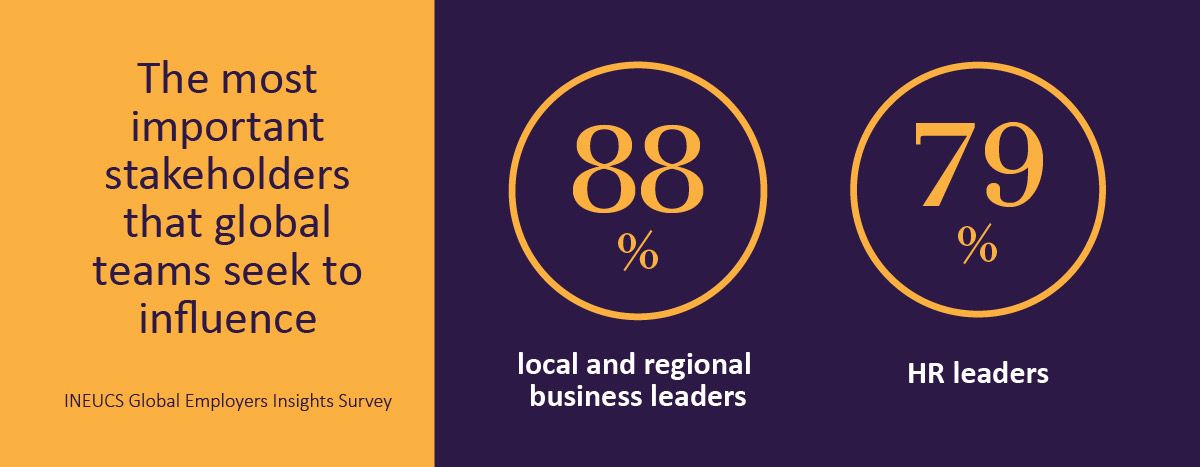Moving to a global Early Careers strategy.
Are you seeing the bigger picture?

Gaining greater perspective by looking globally can help organisations identify new opportunities, increase efficiencies, and improve processes for their business.

So, why is it standard practice for global organisations to have numerous local Early Careers strategies? Should global businesses have global Early Careers and Campus strategies to match?
Fixing something that’s not broken?
There’s nothing wrong with having different Early Careers strategies for each region or area of your business. After all, each region is different and has its own nuances; trying to combine some of these aspects into a global framework may put you out of line with local markets. For example, in the US and India, processes like online testing and video interviewing come with differing legal complexities.
On a broader level, the approach to key strategies like university relationships and diversity are evolving at different rates across the globe.

Or creating a coherent foundational platform?
But thinking globally could be an advantage. Having a joined-up approach with standardised processes will drive more consistent team delivery. And, if you operate the same assessment processes, you're bringing in a consistently qualified Early Careers cohort who you can socialise and train together with a global mindset.
Having a global outlook allows you to deliver on universal initiatives like diversity, equity and inclusion or to create a consistent strategy to fill skills gaps. It also means delivering a comprehensible and cohesive brand message, so there’s no disparity when candidates are looking to join, wherever they are in the world.
It’s important to remember that talent markets are global, too. The INEUCS Global Employers Insights Survey highlighted that 6.4 million students moved to a different country in 2024. With such high candidate mobility across different regions, it is becoming increasingly important that candidates have a similar experience, no matter where they are.


The business case for going global
- Target global outcomes
Track ROI from Early Careers hiring and drive organisational goals, such as DEI and tech skills. - Brand consistency
Ensure all candidates experience the same journey. - Standardisation of assessment and selection
Provide consistency of quality hires across the organisation. - Consistent training
Allow all new hires to attend the same foundational skills development courses. - Improved efficiencies
Create a helpdesk for global candidate queries instead of multiple separate mailboxes, and partner with a global RPO provider for greater flexibility across regions, in line with local recruitment peaks and troughs. - Exploitation of global partnerships
Leverage relationships with RPO partners, assessment providers (i.e. SHL), attraction tech (Handshake), social media planning and coverage. - Reporting and data
Report globally across all divisions.

Your roadmap to going global
Scaling from a local to global Early Careers strategy may feel like mountains need to be moved.
There is a lot to consider, but these simple steps will set your organisation on the path to a consistent, sophisticated, and global methodology.
Step 1: Understand the process
Before doing anything, it's important to get under the skin of each local strategy and see how one differs from another, region to region. To do this, run an audit of the many processes and programmes in place.
Start by identifying each stakeholder, which will often be local HR specialists who have supported intern and graduate hiring in-country. Then spend time doing 'deep dive' sessions. Ask pre-set questions and discuss the end-to-end process. It’s vital to understand what they are doing across each stage, from attraction, through to onboarding and offer management.
Next, identify the tools they're using. What technology are they deploying and what are the assessments? How are they attracting new talent? Do they go onto campus? At which point in the year?
By working through each stage and mapping the Early Careers journey in each locality, you can identify where there are similarities and differences that can be optimised or streamlined.
Bringing in an expert Early Careers strategy partner to help you understand local processes, governance and compliance can provide objectivity and a broader view of what needs to be changed.
Step 2: Choose the most effective and efficient process
Once you've completed your audit, it’s time to design the global process.
There are many different aspects that will need to be evaluated, including:
- Applicant Tracking System (ATS) – This will form a large part of your core process, so it’s important to decide how this will run. By ensuring a streamlined workflow across regions, you will be able to extract meaningful global data that measures key performance outcomes (e.g. time-to-hire, conversion rates, candidate diversity, etc.) and reporting in a consistent way.
- Global framework – Engage with key stakeholders across regions from both the business and HR to understand and identify key characteristics that are most valued by Early Careers employers; like candidate skills, qualifications, or experience. Clarifying exactly what you are looking for in your candidates will help underpin your overall hiring and assessment strategy that can be built out consistently region to region.
- Programme framework – This should be evaluated similarly to the global framework. Consider how it will impact the regions, business and candidate needs, as well as global business objectives. For example, how are you developing your Early Careers employees while on the programme? Which training and networking interventions can be globally aligned? What roles are they exiting into? And how can you create a consistent experience.
Throughout this process, it’s vital to communicate with all key stakeholders. These will sit across local and global HR, as well as within the business, and could be Early Careers or local HR specialists.
It’s also important to engage with Learning and Development teams, internal or external attraction and branding specialists, assessment leads, governance and compliance stakeholders, as well as diversity teams, to ensure any new processes are fit for purpose, fair, unbiased, and aligned with regulations.
You must also consider the future team model. Often local resources will not be line managed by global teams, and according to the INEUCS Global Employers Insights Survey, 54% of global Early Careers teams include local resources. So, getting opinions from a wide range of stakeholders will ensure views are identified upfront, avoiding fewer problems in the future.

All this might sound like a lot to achieve; when taking on a large-scale strategy transformation, it’s helpful to use the ‘horizon’ approach. Break down your overall process into stages. What’s achievable in year one, two and three? You may start with standard process and ATS adjustments, or governance and reporting in year one. Then, the following year’s goal could be tackling a redesign of your assessment and programme strategies.
These small steps over time will add up to meaningful changes that make your process more consistent and cohesive.
Step 3: Recognise regional nuances
Considering regional nuances within your global strategy is important. For example, some localities will hold video interviews while others prefer to keep the entire process in-person. Different regions will run back-to-back interviews, while some will favour assessment centres with a range of exercises.
Getting the blueprint right will minimise push-back with the business and ensure candidate engagement with your brand. When reviewing the nuances across regions, consider whether they are processes that are unique to your organisation or something that is a given for that region. Certain local regulations or ways of working require unique processes that can’t be avoided. For example, contracting with universities for interns in certain EMEA locations, works councils in Germany, compliance in the US, and working with campus placement officers in India. Other processes can be more easily adapted or removed.
You may also encounter governance differences. For instance, regarding the order and timing of compliance steps, some localities might send out a referral questionnaire before they make an offer. Others won’t do this until after the offer stage. Nuances like these need to be documented and factored into the blueprint, as this is where mistakes can happen. Ideally, your ATS can accommodate these nuances so that data is easily reportable, and audits can be completed.
Many regional stakeholders may happily jump on board. But you should be prepared for objections and have a credible business case as to why you are proposing this strategy for the business. Some stakeholders will just want to carry on doing what they’ve been doing. A robust change management solution will be critical.

Step 4: Measure and report
To make the global approach a success, you need to evidence it.
Look at different common performance indicators, such as vacancy fill rate or pipeline reporting. Where are the candidates in the process right now? What are the conversion rates of candidates from final stage to offer? Are the diversity levels higher or lower at different stages of the process? Has the time-to-hire been reduced? How long are candidates held at each stage? Which source are candidates coming from and how are they performing?
Data like this will help you look holistically across the whole new process, so you can see what’s working and what may need to change. Also, it can help highlight any unwelcome trends, allowing them to be better addressed and future opportunities. Building a global reporting tool will allow you to look holistically and draw trends and conclusions to support global hiring strategy.



Case study
Global healthcare technology business
A global healthcare technology business outsourced their early careers and campus recruitment to AMS leading to a candidate satisfaction rating of 94%, a hiring manager satisfaction of 90% and an increase in gender diversity of 20%. The partnership moved from a local strategy hiring disparate region to region to a global one. It now yields over 250 intern hires annually across 27 countries, delivered in a consistent and cohesive manner.
With your customer focus and incredible sense of execution you are making miracles...You are demonstrating case by case that this model is working. Thank you!"


Need some help?
Delivering an Early Careers strategy like this requires a transformation. And this level of organisational change doesn’t happen overnight.
You may need to deploy extra resources, bring in new people, or restructure your current team so that you can manage a global scope rather than a local one. Partnering with an experienced RPO provider can help. They'll have the expertise to plan, deliver and measure the success of your strategy.
Conclusion
Consistency allows businesses to build trust, broadcast the right message, and deliver services efficiently and profitably. The same is true for Early Careers.
By delivering the same global solution for all, organisations can improve their candidate experience and have confidence in a consistent level of qualified talent.
If global businesses want to secure tomorrow’s brightest minds, they need to start refreshing and redesigning how they attract, recruit and onboard their Early Careers talent.
It’s time to think global, not local.
AMS has helped some of the world’s leading organisations make the transition to a global Early Careers strategy.
We have the expertise and experience to identify a suitable process, pinpoint nuances to address, define metrics that count, and create the strategy that’s right for your business.


